
Passes in Ladakh
Table of Contents
ToggleOverview
Ladakh, also known as the “Land of High Passes,” is an exceptional place in the northernmost part of India, bounded on the south by the towering Himalayas and on the north by the Karakoram range. The region has very picturesque landscapes, such as snow-capped mountains, the deserts, and roadways passing through some of the world’s highest peaks on high altitudes. Among the natural wonders, mountain passes of Ladakh stand out as the feature of the region. They provide an extraordinary journey through rugged terrains and unparalleled access to some of the most remote corners of the Indian subcontinent.
Ladakh’s mountain passes are not geographical curiosities; they are gateways to an adventure of a lifetime, with each pass offering its own unique charm and challenges. Whether you are a motorbike rider, a trekker, or nature lover, there is something mesmerizing about Ladakh’s passes. All these routes-high altitude roads, at least many were-important earlier for trade as well as communication between Tibet and further places. But they now are an imperative part of this region’s infrastructures. These are what the tourist wants to find from other parts of the world.
This blog takes you through the journey of some of Ladakh’s most renowned mountain passes, taking you deep inside these mountainous territories. We will find out about their history, best time to visit them, and how to get there. And also what makes each one special, and why it is a must-visit for all adventure seekers, nature lovers, and photographers.
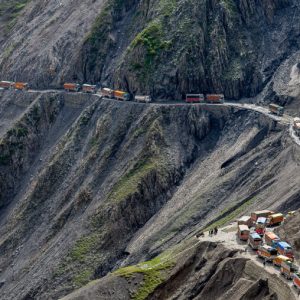


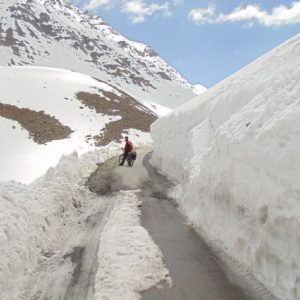
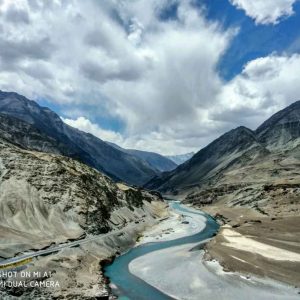
Historic and Geographical Significance
It would be apt to understand the mountain passes of Ladakh in historical and geographical terms before entering the individual passes. Not only are these passes to remote regions, but also ancient trade routes connecting India with Central Asia, Tibet, and China. It is because of the strategic location of the region on the ancient Silk Route that Ladakh became an important player in cross-continental exchanges of goods, culture, and ideas.
Ladakh’s passes have been used for centuries on military, economic, and cultural grounds. The Ladakh region is very harsh and demanding, extreme temperatures and unpredictable weather, with rugged and often treacherous roads. Yet the people of Ladakh adapted to it for centuries and so much so that their affinity with the land comes out in the way they mastered the mountain passes crossing over their region.
The passes of Ladakh also have historical importance as these offer breathtaking vistas of the surrounding mountain ranges and valleys. The passes pass through some of the most remote areas and highest places in the world, thus offering a once-in-a-lifetime adventure into the wild and unexplored Himalayan beauty.
The Best Mountain Passes in Ladakh
Some of the world’s most spectacular mountain passes adorn the land of Ladakh and give us unique challenges and benefits from each one. Of these, some of the very well-known ones include famous Khardung La up to quiet, remote Taglang La, with a closer view here on the best and popular passes in Ladakh.
1. Khardung La Pass: World Highest Motorable Road
Elevation: 5,359 meters or 17,582 feet
Without question one of the most famous mountain passes anywhere on Earth, Khardung La lies about 40 kilometers to the north of the capital city of Ladakh and ranks as the world’s highest motorable pass. Connecting the city of Leh to the absolutely beautiful and picturesque Nubra Valley within Ladakh, this very pass is so popular among tourists for its Tibetan culture and beautiful landscapes.
Key Features:
- World Record: Khardung La is also in the record book for holding the record of being the highest motorable pass in the world. The ride to Khardung La is an adventurous ride for the bikers and motorcyclists who take up this extreme journey.
- Scenic Views: While moving towards the top, the panoramic view of the surrounding snow-clad peaks, deep valleys, and mountainous terrain is something that is not less than spectacular.
- Historical Significance: Khardung La has historically been an important trade link from India to Central Asia with the movement of goods through the mountain range of Himalaya.
- Adventure Drive: Motorbikers and adventure tourism have always found a special fascination in Khardung La because of the challenge of driving up to the top where altitude and weather can play havoc.
How to Reach Khardung La:
Khardung La is situated just beyond Leh and is accessible by road from Leh. Nevertheless, the road to Khardung La is paved but often bumpy and potholed in certain areas. One has to be properly prepared and acclimatize before attempting the climb since altitude sickness can start becoming an issue because of thin air at such an altitude.
2. Chang La Pass: Access to Pangong Lake
Altitude: 5,360 metres (17,590 ft)
Chang La is believed to be the third-highest motorable pass in the world and is one of the finest approaches to one of Ladakh’s most celebrated attractions: the beautiful Pangong Lake. It is about 130 kilometers from Leh and on the way to the most spectacular Pangong Lake-the stretch of water lying across India and Tibet. Chang La is also famous for its tranquil beauty, apart from Buddhist monasteries spreading over its stretch.
Key Features:
- High Altitude and Scenic Views: The view from Chang La is nothing less than fantastic. Surrounded by jagged mountain peaks and vast valleys, it offers travelers an unparalleled view of the grandeur of the Ladakh region.
- Spiritual Significance: Chang La has a small temple at the top, dedicated to the local deities, and many travelers stop here to offer prayers for a safe journey.
- Severe Weather: Change La has extreme weather. When the mercury falls below freezing even in the summer months, it would be advisable to pack sufficient clothing and be prepared for sudden changes of weather.
How to Reach Chang La:
Chang La is on the Leh-Pangong Lake highway. It can be reached by car, motorcycle, or jeep from Leh. All high-altitude passes have to be acclimatized before ascending.
3. Zoji La Pass: The Gateway to Kashmir
Altitude: 3,528 meters (11,575 feet)
Zoji La is one of the high-altitude mountain passes that connect Srinagar-Leh Highway towards Ladakh and Kashmir. It has been in importance for centuries as caravans often used it and continues even today as an important route for not only military traffic but civilians too. The steep road, narrow roads, extreme weather conditions characterize Zoji La.
Key Features:
- Narrow and Treacherous Roads: The road through Zoji La is pretty narrow, often blocked by snow and so is not really drivable in winter.
- Beautiful scenery: Despite the ruggedness of the roads, it has some of the best sights to see like mountain tops, valleys, and lush green meadows that fall into view especially in the spring and summer.
- Strategic Location: It is strategically placed along the Line of Control (LoC). It is strategically important due to its proximity to Pakistan-occupied Kashmir and it has also been an important linkage for the Indian Army.
How to Reach Zoji La:
Zoji La is one of the few passes which lie on the Srinagar-Leh Highway. However, both Srinagar and Leh can be considered as base points. While the pass is open from May to October for traffic, it does not suit amateur drivers who should better avoid it; the road is perilous.
4. Taglang La Pass: The Serene Haven
Elevation: 5,328 meters (17,480 feet)
Taglang La is one of the world’s second-highest motorable passes and follows the Leh-Manali Highway. It is perhaps one of the quietest escapes to avoid crowds of other passes in Ladakh. The pass is recognized for its quietness and natural beauty. It makes it a great stop for explorers looking to experience some of the lesser known Ladakh.
Key Features:
- Quiet Environment: In contrast to Khardung La or Chang La, which is very noisy and crowded, Taglang La is peaceful and quiet and perfect for those who seek solitude in the Himalayas.
- Great for Trekking: Taglang La is also a trekkers’ paradise. There are several trek routes that end up in alpine meadows, high-altitude lakes, and isolated villages.
- Panoramic Views: The pass offers fantastic views of the surrounding peaks, which are especially of the beautiful Zanskar Range- one of the most exquisite places of Ladakh.
How to Reach Taglang La :
Taglang La is located on the Leh-Manali Highway, 50 km from Leh. The road to the pass is good, but one must prepare oneself for the tough conditions at the top, which is usual for all passes in Ladakh. Altitude sickness also can occur; hence, one must prepare oneself for the same.
5. Lachulung La Pass: A Remote Adventure
Elevation: 5,065 meters (16,617 feet)
Lachulung La lies between the Baralacha La and Tanglang La. It connects the region of Keylong to Leh. This pass is relatively very less crowded than the rest in Ladakh. Hence, it is perfect for adventure-seekers who seek seclusion. Lachulung La offers some of the most remote and virgin landscapes in the region.
Key Features:
- Rough Terrain: Lachulung La road is the roughest and most challengingly surfaced track that most of the adventure freaks like to try on.
- Virgin Nature: It is encompassed with large ranges of snow peaked ranges, rocky regions, and high altitude lakes all around, thereby giving a virgin atmosphere around it.
- Off-the-Beaten-Path: There are fewer tourists visiting Lachulung La as compared to famous passes like Khardung La and Chang La, making it an ideal location for those seeking an off-the-beaten-path experience.
How to Reach Lachulung La:
Lachulung La can be reached through the Leh-Manali Highway, and one can drive or ride a motorcycle up to it. The road can be tough, so one needs to have a strong vehicle and be prepared for long stretches of isolated terrain.
Conclusion
The mountain passes of Ladakh are an experience that will be unforgettable for travelers. It allows them to visit one of the most remote and scenic places in the world. Whether it is the challenging Khardung La, the peaceful Taglang La, or the historic Zoji La, each pass has its own distinct charm and beauty. For those prepared to accept the challenging topography and the unpredictable climate, there exist rewards of unmatched views, thrilling adventures, and a deep connection with the region’s history and culture.
Do not forget to carry your camera, your sense of adventure and an open heart while making plans for your Ladakh journey so that you can cherish the grandeur and majesty of Ladakh’s high mountain passes.
How to book Ladakh tour?
Contact a travel agency that specializes in Kashmir tours. You can reach out to the following for assistance:
- Phone:
- +91 7889 655596
- +91 7006 891267
- Email:
Inquire about tour packages, itineraries, and pricing, and confirm your booking for a memorable winter experience!
People Also Ask
What are the major passes in Ladakh?
Some of the major passes in Ladakh include Khardung La, Chang La, Tanglang La, Zoji La, and Baralacha La.
What is Khardung La famous for?
Khardung La is famous for being one of the highest motorable passes in the world, situated at 5,359 meters (17,582 feet) above sea level, and it connects Leh with Nubra Valley.
Can I drive over Khardung La?
Yes, Khardung La is motorable and can be accessed by car, bike, or jeep, but due to its high altitude, travelers need to be cautious about altitude sickness.
What is the altitude of Chang La?
Chang La is located at an altitude of 5,360 meters (17,590 feet) and is one of the highest motorable passes in the world, connecting Leh to Pangong Lake.
Is Chang La pass accessible throughout the year?
Chang La is generally accessible throughout the year, but during heavy snowfall in winter (October to March), the pass might get closed due to weather conditions.
What is the significance of Tanglang La?
Tanglang La, at an altitude of 5,328 meters (17,480 feet), is the second-highest motorable pass in Ladakh and offers breathtaking views of the surrounding mountains and valleys.
What is Zoji La known for?
Zoji La, situated at 3,528 meters (11,575 feet), is an important pass connecting Ladakh with Kashmir. It is known for its scenic beauty and often challenging driving conditions.
How difficult is the drive over Baralacha La?
Baralacha La is located at 4,890 meters (16,043 feet) and is a relatively challenging pass to cross due to its steep gradients and unpredictable weather, especially in winter.
Can I visit Ladakh’s passes in winter?
While some passes like Khardung La and Chang La are open year-round, others, such as Zoji La and Baralacha La, may be closed during winter months (November to March) due to heavy snow.
What is the best time to visit the passes in Ladakh?
The best time to visit Ladakh’s passes is between June and September, when the weather is pleasant and the roads are generally open and accessible.
What is the altitude of Khardung La?
Khardung La is situated at an altitude of 5,359 meters (17,582 feet) and holds the title of one of the highest motorable roads in the world.
How high is the Tanglang La pass?
Tanglang La stands at an altitude of 5,328 meters (17,480 feet) and is known for its tough terrain and mesmerizing views of the Indian Himalayas.
Is it safe to cross the high-altitude passes in Ladakh?
It is generally safe to cross the passes if you are well-acclimatized, travel in a good vehicle, and take necessary precautions against altitude sickness.
What are the main routes that pass through Ladakh?
The major routes include Leh to Nubra Valley (via Khardung La), Leh to Pangong Lake (via Chang La), and Leh to Manali (via Baralacha La and Rohtang Pass).
What are the best passes to cross for adventure enthusiasts?
For adventure lovers, crossing Baralacha La, Khardung La, and Tanglang La offers an exciting experience due to their altitude, scenic beauty, and challenging terrain.
How does altitude sickness affect you on high passes in Ladakh?
Altitude sickness can occur at altitudes above 3,500 meters (11,500 feet), causing symptoms like headaches, nausea, dizziness, and shortness of breath. It is important to acclimatize and stay hydrated.
Are there military checkpoints at Ladakh passes?
Yes, many of the high-altitude passes, especially near the border areas, have military checkpoints, and permits are required to travel in these regions.
What is the best way to prepare for crossing Ladakh passes?
Prepare by acclimatizing to high altitudes, carrying warm clothes, staying hydrated, and traveling with a vehicle suitable for rough terrains. It is also essential to have permits for restricted areas.
What kind of vehicles are best for crossing Ladakh passes?
High-ground clearance vehicles like SUVs (e.g., Mahindra Thar, Toyota Fortuner) or motorcycles (e.g., Royal Enfield) are ideal for navigating Ladakh’s rough and steep passes.
Is it safe to travel through passes like Khardung La on a bike?
Yes, biking through Khardung La is popular among adventure enthusiasts. However, bikers must ensure their bike is in good condition and they are well-acclimatized to the high altitude.
What are the road conditions like at the passes in Ladakh?
Road conditions vary. Some passes like Khardung La and Chang La are well-maintained, while others, such as Baralacha La and Zoji La, may have rough, unpaved stretches with loose gravel and mud.
Can I find food and fuel at the passes in Ladakh?
Basic food and fuel stations are available at most major passes like Khardung La and Chang La. However, more remote passes like Baralacha La may not have regular facilities, so it’s important to carry provisions.
What are the scenic spots near the passes in Ladakh?
Near Khardung La, you can enjoy views of Nubra Valley; at Chang La, you’ll get a glimpse of Pangong Lake; and Tanglang La offers panoramic vistas of the Zanskar Range and surrounding valleys.
What passes connect Ladakh to other regions of India?
Some of the passes connecting Ladakh to other regions include Zoji La (to Kashmir), Rohtang Pass (to Manali), and Baralacha La (connecting Ladakh to Spiti Valley and Himachal Pradesh).
Are permits required for crossing Ladakh passes?
Yes, most high-altitude passes, especially those near the border areas, require permits. Foreign nationals need a Protected Area Permit (PAP), and Indian nationals may require Inner Line Permits (ILP) for certain regions.



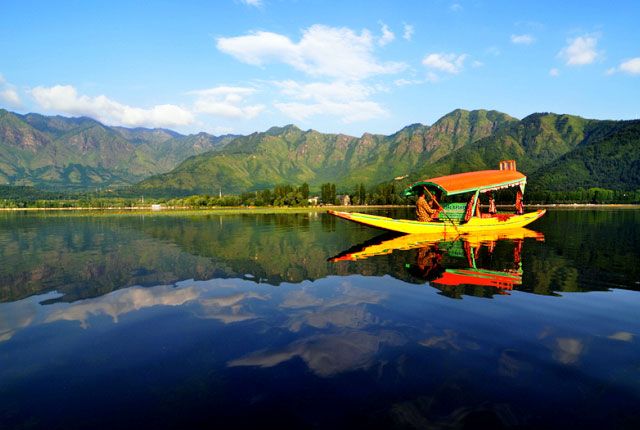
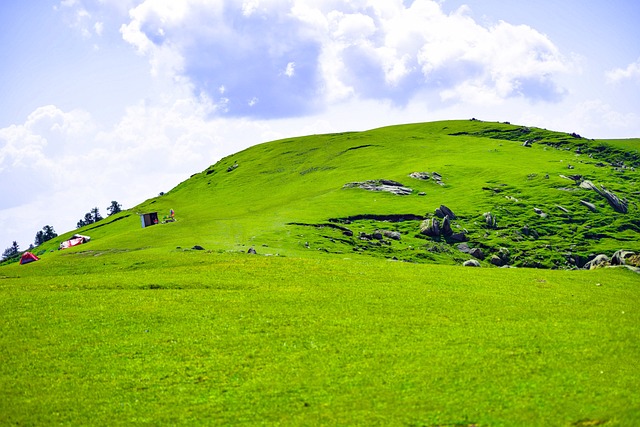
Best tour planner of the Kashmir… If you are on travelcation… please do contact them… They provide best trip in reasonable rate, thank you Golden wheels tour n travles.
A big thanks for your great service full of cooperation and genuineness. Since the first call for a journey up till now, have made 5 altogether, the service provided was so helpful and full of comfort. I was new in this city so I wasn’t much aware but golden wheels really helped me in managing everything I needed with full guarantee of safety and comfort. You people have earned the trust and all the best for your future.
Thanks Golden Wheels Travels for such a good service.
I had a great experience with the transportation service provided by Golden Wheels. The driver was friendly and polite. The car was clean and well-maintained. The booking process was simple and hassle-free. I would definitely recommend Golden Wheels to anyone in need of reliable transportation.
the driver was amazing. We had an amazing trip. he was very helpful and guided us through the whole trip. he made everyone feel very comfortable, my daughter, me, everyone. Thank you for an amazing trip, Would definitely recommend it to everyone.